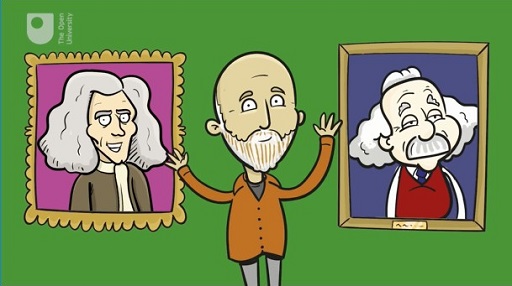6 Time and gravity
The theory of special relativity revealed that time flows at different rates for different observers according to their relative speeds. The general theory goes further: time also flows at different rates where the strength of gravity differs – strong gravity makes clocks run slow. This is known as ‘gravitational time dilation’ and is quite distinct from time dilation due to relative speeds.

Transcript: Video 6 Curved spacetime (part 2)
The effect was first demonstrated in a laboratory experiment in 1959, and in a high-altitude rocket experiment in the 1970s. The theory predicts that clocks will run faster on top of a mountain than they would in the valley below, as the top is further from the centre of the Earth and therefore gravity is weaker. Of course, the difference here is very small. Near the surface of the Earth a clock will gain just 9.4 nanoseconds a day for each kilometre of height. But that’s enough to be taken into account when readings of atomic clocks around the world are combined to form International Atomic Time.
Such tiny differences might not sound too significant, but they have practical consequences. For example, they have an impact on satellite navigation. The satellites of the Global Positioning System (GPS), used by satnavs and smartphones, orbit the Earth at a height of around 20 000 kilometres. At that distance, the gravitational field is weaker than that experienced on the surface of the Earth, and consequently their onboard clocks gain 45 microseconds (millionths of a second) a day compared to clocks at sea level. On the other hand, because of their orbital speed, the clocks lose 7 microseconds a day. Together these effects – from general and special relativity – cause the satellite clocks to gain a net 38 microseconds a day compared to clocks on the ground. Fortunately, when your smartphone computes its position from signals received from GPS, these different rates are taken into account. If relativity were ignored, you would literally not know where you were.
Having touched on the rudiments of general relativity – curved spacetime and gravitational time dilation – it’s time to explore a place where it’s all going to go wrong.
